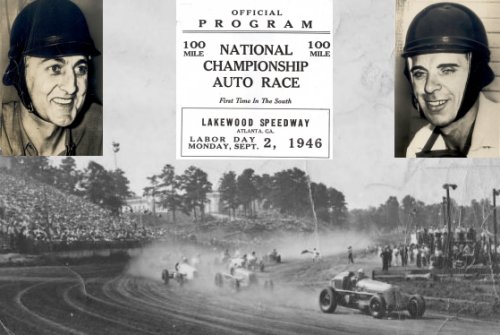
Labor Day, 1946 saw George Barringer (left) and George Robson (right) lose their lives in a AAA Indy car event at Lakewood Speedway in Atlanta.
By Brandon Reed
Posted in Feature Stories 8/27/09
It remains one of the most infamous days in Georgia racing history.
Labor Day, September 2, 1946. Lakewood Speedway in Atlanta played host to a AAA Indy Car race that featured open wheel hero Ted Horn, defending Indianapolis 500 winner George Robson and popular Texas wheelman George Barringer, along with eight other drivers, in a 100-mile event in the sweltering Georgia summer.
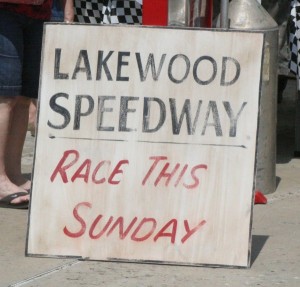
Lakewood Speedway sign recreation by Ron Edwards.
By Brandon Reed and Justin Poole
Posted in Feature Stories 8/20/09
August 8 saw the holding of the second annual Lakewood Speedway Reunion at the Georgia Racing Hall of Fame. Hosted by the City of Dawsonville, Georgia, the event brought together former drivers, car owners and fans of the great track.
All in all, it was a great day of remembering and honoring. On display was the trophy from the Lloyd Seay Memorial, held late in 1941, along with photos of the heroes of Lakewood as well as those who lost their lives at the track, including George Barringer, George Robson and Skimp Hersey.
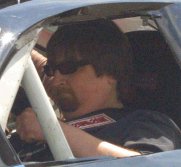
Brandon Reed
By Brandon Reed
Posted in Columns 8/13/09
With rain delaying the last two NASCAR Cup events, the obvious question kept coming up over and over.
“When will NASCAR finally break out rain tires and run a Cup race in the rain?”
This became a natural question after last year’s Nationwide series at Montreal that was run in the rain.
Following that event, the NASCAR P.R. machine pumped out press releases touting it as the first ever NASCAR event to be run in the rain.
There’s only one problem with that statement – it’s false.
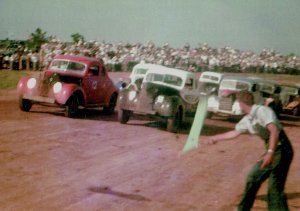
A field of cars takes the green flag in a heat race at the Jackson County Speedway on May 16, 1948. Photo courtesy Harold & C.L. Pritchett
By Brandon Reed
Posted in Feature Stories 8/6/09
Three miles outside of Jefferson, Georgia, the Damon Gause bypass crosses over a piece of history.
If you drive out towards Athens on the 129 bypass, and you look in just the right spot, you can still see a little of it.
It’s the Jackson County Speedway, the first known racetrack in Jackson County. In its day, it drew some of the fastest and best drivers to its high-banked turns.

Justin Poole
By Justin Poole-Guest Columnist
Posted in Columns 7/30/09
Have you ever felt the urge to wind your car out as fast as it will go just to feel the rush of adrenaline and the acceleration push you back in your seat?
Other than on the interstate, socially responsible people probably never get above 85 mph, but if that doesn’t curb your appetite for speed, I know just the thing.
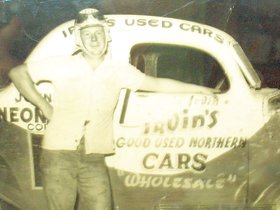
Tommie Irvin of Baldwin, Georgia, poses next to his racer at the Greenville-Pickens Speedway in the early fifties. Photo courtesy Tommie Irvin
By Eddie Samples
Posted in Feature Stories 7/23/09
Tommie Irvin is a former soldier, race driver and speedway owner. Thirty-four years he worked for the State of Georgia Agriculture Department, and at a much younger age, against the State of Georgia playing in the white liquor business. (His cousin Tommy Irvin is the longtime commissioner of the Department of Agriculture.)

Brandon Reed
By Brandon Reed
Posted in Columns 7/23/09
Drivers from Georgia have been successful at many of the most important and most historic tracks in the country.
Brothers Fonty and Tim Flock both beat the one-mile track at Langhorne, Pennsylvania, a circuit so mean and tough that it was referred to as the “track that ate it’s heroes.”
Georgia drivers dominated the beach at Daytona. Lloyd Seay, Roy Hall, Gober Sosebee, Bernard Long, Harold Kite and the Flock Brothers all tasted victory at the four-mile layout, while Sam McQuagg won on the big track in 1966. The late Dale Singleton would twice win the Daytona 200 motorcycle event at the track, while Gene Felton won in sports cars.

Brandon Reed
By Brandon Reed
Posted in Columns 7/16/09
It was 16 years ago this week that the racing world lost one of it’s great drivers.
On July 13, 1993, Davey Allison was injured in a helicopter crash at Talladega Superspeedway. He, along with fellow Alabama Gang member Red Farmer, had planned to watch Neil Bonnett practice for a comeback attempt after his debilitating injuries in a 1991 crash.
Farmer survived with a broken arm. Allison fought through the night, but would pass away sometime the next morning.
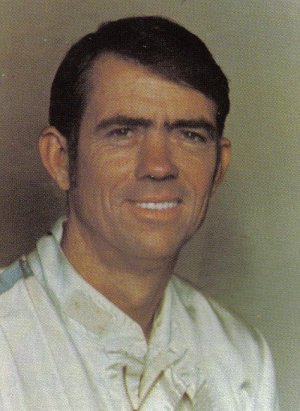
Bob Burcham
By Mike Bell
Posted in Feature Stories 7/9/09
Bobby Wayne Burcham, Sr. was born on August 22, 1935 in Booneville, Mississippi, and slowly his family settled near the Georgia/Tennessee line. And where did he get the name “Bullet” Bob Burcham?
His father Bobby Burcham and mother Opal had three children (brother Joe and sister Sue) in Depression era Booneville, located somewhere between Corinth and “that place where Elvis was born” – Tupelo. They worked hard on the farm as well as cutting lumber at a small mill they owned.

Brandon Reed
By Brandon Reed
Posted in Columns 7/2/09
The field of 43 drivers that take the green flag Saturday night in the annual Pepsi 400 at Daytona International Speedway will be driving cars that are engineered to use aerodynamics to their advantage, helping to obtain higher speed and better stability.
That stability, however, was not something NASCAR stock cars always had at Daytona. As the speeds got faster in the first few years of racing on the big super speedway, the cars became difficult to hang on to.
But in 1966, a Georgia racing Hall of Famer changed all that.







